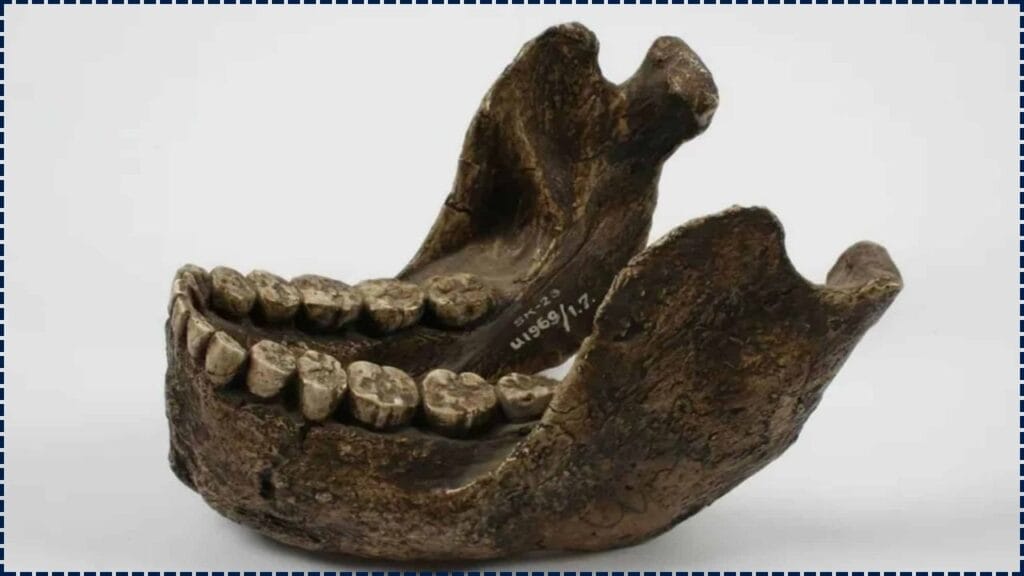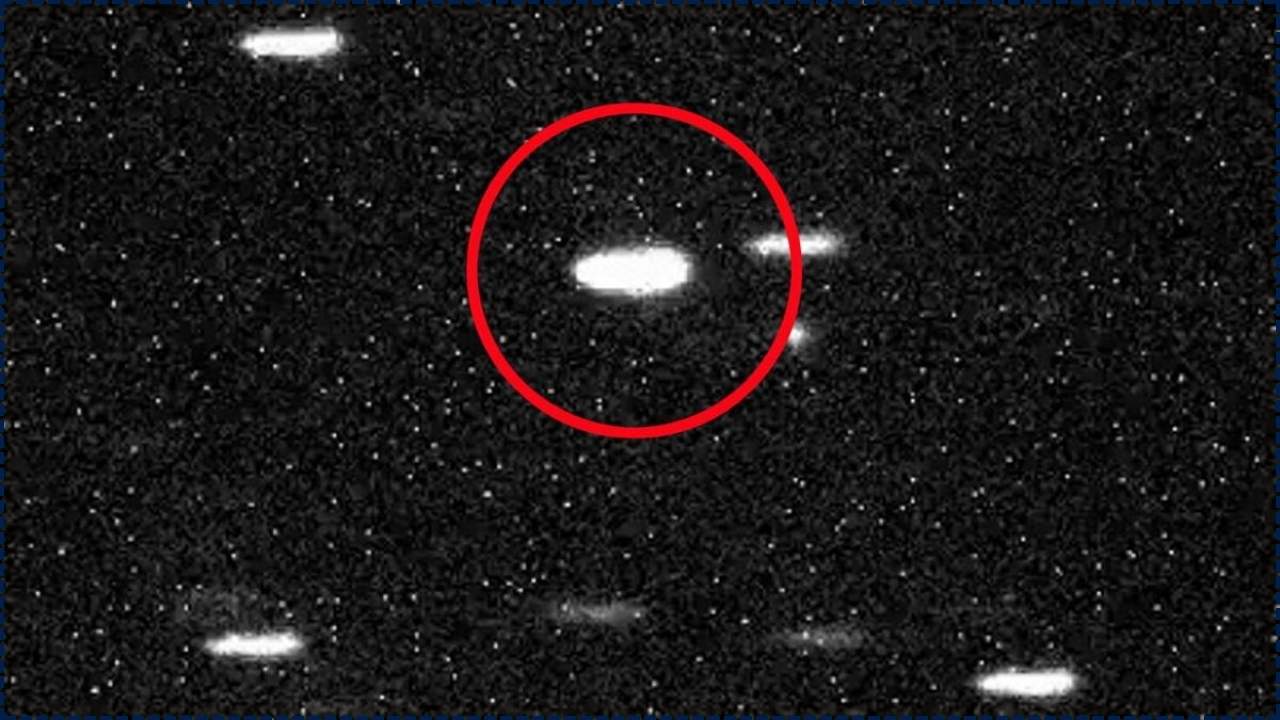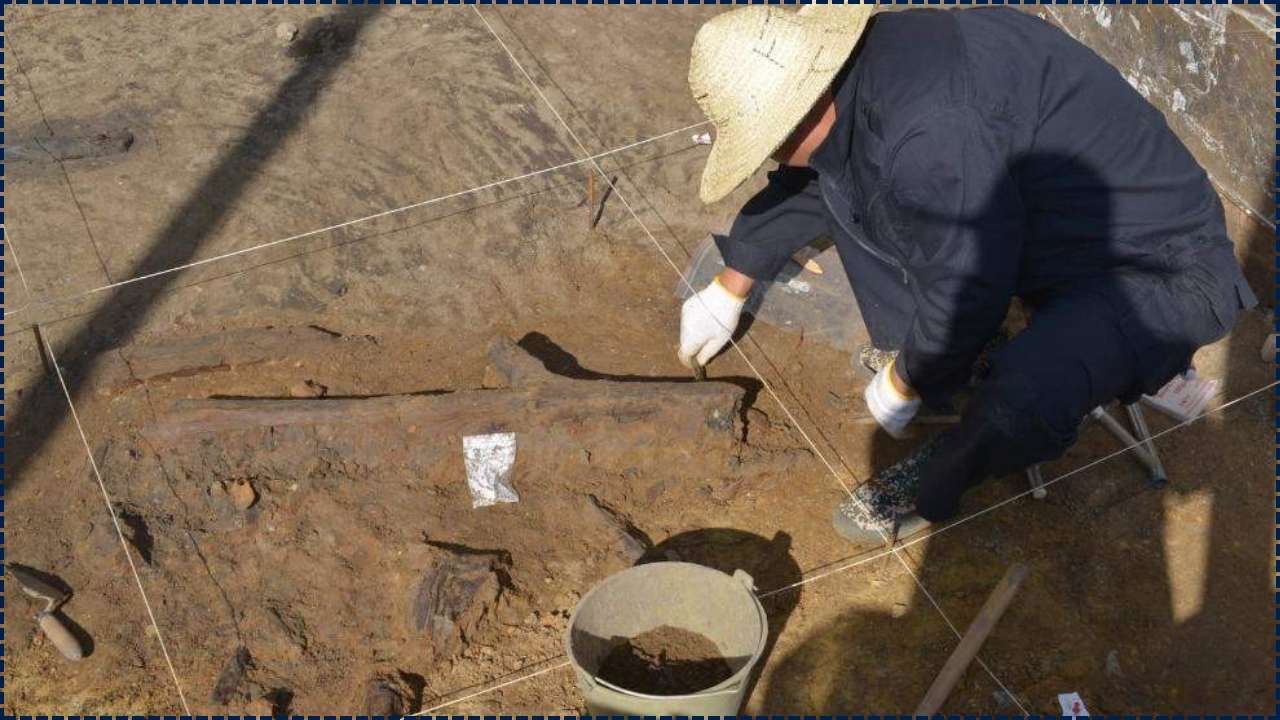2.2 million-year-old teeth found in South Africa are radically shifting our understanding of early human evolution. These ancient remains, unearthed at the historic Swartkrans cave site within the Cradle of Humankind World Heritage Site, have caused a seismic stir in scientific circles. Why? Because researchers used paleoproteomics—a revolutionary technique involving the analysis of ancient proteins—to uncover evolutionary secrets buried for over 2 million years.

Unlike DNA, which degrades quickly in warm climates, proteins found in enamel survive much longer. This makes the enamel-coated teeth a molecular time capsule. Scientists now have a clearer lens through which to view the biological identities of some of our earliest hominin relatives, like Paranthropus robustus. And what they’re seeing challenges decades of assumptions.
2.2 Million-Year-Old Teeth Found in South Africa
| Topic | Details |
|---|---|
| Discovery Location | Swartkrans Cave, Cradle of Humankind, South Africa |
| Species Studied | Paranthropus robustus |
| Estimated Age | 2.2 million years old |
| Scientific Technique | Paleoproteomics (protein analysis in tooth enamel) |
| Breakthrough Discovery | Male individual identified among remains previously thought to be female |
| Why It Matters | Overturns reliance on tooth size for sexing fossils; reveals greater biological diversity in ancient populations |
| Institutions Involved | University of Copenhagen, University of the Witwatersrand |
| Video Resource | Watch: OLDEST Hominin Genetic Data Extracted – YouTube |
The 2.2 million-year-old teeth found at Swartkrans aren’t just interesting—they’re groundbreaking. Thanks to the field of paleoproteomics, we’re rewriting what we know about our ancient relatives one protein at a time. This isn’t just about one species; it’s about using better tools to understand where we all come from.
Every fossil tells a story, and now, those stories are clearer, louder, and more detailed than ever before. With just a tiny fragment of tooth enamel, scientists are building a more accurate, inclusive, and awe-inspiring picture of human history. What we learn next might change everything again.
Digging Into Deep Time: What This Discovery Means
Let’s be real—when you think about fossils, you probably picture bones. But scientists are now learning that teeth might be even more valuable than bones when it comes to understanding our ancestors. That’s because tooth enamel is the hardest substance in the human body and can preserve proteins for millions of years.
In this study, published in Nature, researchers extracted enamel from four Paranthropus robustus individuals. Through cutting-edge protein sequencing, they could identify not only the species but also the biological sex of each individual. This is the first time such data has been extracted from fossils this ancient.
One surprising twist? A smaller-toothed specimen long assumed to be female was actually male. This finding shows how misleading tooth size can be when assigning sex to ancient remains. It’s not just a scientific correction—it’s a paradigm shift.
What Is Paleoproteomics and How Does It Work?
Think of paleoproteomics as the modern-day Rosetta Stone for fossils. It’s a forensic science that enables us to:
- Recover and isolate ancient proteins from tooth enamel
- Analyze amino acid chains using advanced mass spectrometry
- Interpret biological data such as sex, ancestry, and even evolutionary relationships
Proteins like amelogenin (AMELY and AMELX) help determine if a specimen is male or female. While ancient DNA rarely survives in warm, humid conditions like those in South Africa, proteins can hang around much longer—millions of years, in fact.
This is especially important for African fossils, where DNA is often too degraded to use. Paleoproteomics fills in those critical gaps and opens up new possibilities for re-examining old discoveries.
Who Were the Paranthropus robustus?
These weren’t your average cave dwellers. Paranthropus robustus were early hominin cousins of modern humans. They lived around 1.2 to 2.0 million years ago and had unique features:
- Thick jawbones and pronounced sagittal crests for chewing tough vegetation
- Broad, flat molars perfect for crushing fibrous plants and seeds
- Likely used primitive tools for food processing
- Not direct ancestors, but co-existing evolutionary relatives of Homo erectus and Australopithecus
The Swartkrans cave site is famous for yielding hundreds of Paranthropus fossils. But this new protein-based approach is giving us far more than broken bones—it’s giving us personalities, sexes, and stories.
Why Tooth Size Doesn’t Tell the Whole Story
Traditionally, anthropologists assumed bigger teeth meant male, and smaller ones meant female. But that’s way too simplistic. Here’s why:
- Tooth size varies significantly even within sexes in modern populations
- Dental dimorphism isn’t consistent across all hominin species
- Misclassifying fossils can skew our entire understanding of ancient communities
Thanks to proteins like amelogenin, we now have a far more reliable way to determine sex. That means researchers can go back through museum collections and re-evaluate countless fossils. What we thought was a population of small females may have included some average-sized males all along.
Related Links
Retiring Under FERS? This New Proposal Could Change Everything—Here’s What’s Inside
Planning to Retire in 2025? These 3 Social Security Changes Could Change Everything
Conservative Economists Rally Against ESG: Trump’s Next Move?
How This Changes the Future of Paleoanthropology
This breakthrough is already shaking up anthropology departments worldwide. Here’s what it could lead to:
- Reclassification of existing fossils: Reinterpreting past finds using molecular evidence
- More accurate evolutionary timelines: Based on corrected demographics and traits
- Cross-species comparison: Better insights into the variation within and between species
- Expansion beyond hominins: Apply the same techniques to extinct animals to map biodiversity and migration
Institutions like the Smithsonian have lauded this discovery as a landmark moment. It shows that we don’t always need a whole skeleton to learn something new—a single tooth can be just as revealing.
FAQs About 2.2 Million-Year-Old Teeth Found in South Africa
Q: How is paleoproteomics better than DNA analysis for ancient fossils?
A: DNA degrades within tens of thousands of years, especially in warm climates. Proteins in enamel can survive for millions of years.
Q: How old are the teeth discovered in South Africa?
A: Roughly 2.2 million years, making them among the oldest with recoverable genetic data.
Q: What’s the biggest takeaway from this study?
A: That we can now identify the sex of ancient individuals accurately using proteins—overturning older, less reliable methods.
Q: Can this method be used on other fossils around the world?
A: Absolutely. As long as tooth enamel is preserved, researchers can apply the same process globally.
Q: Where are the fossils stored?
A: Most are curated by the University of the Witwatersrand and displayed at the Cradle of Humankind in South Africa.












